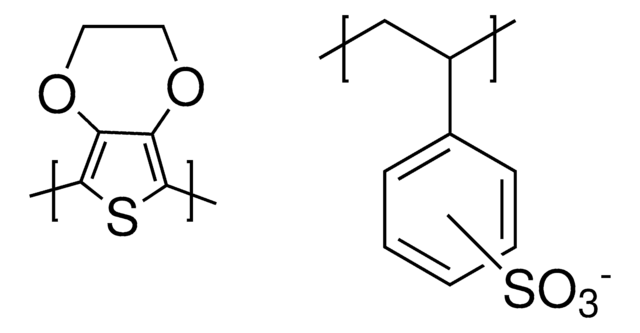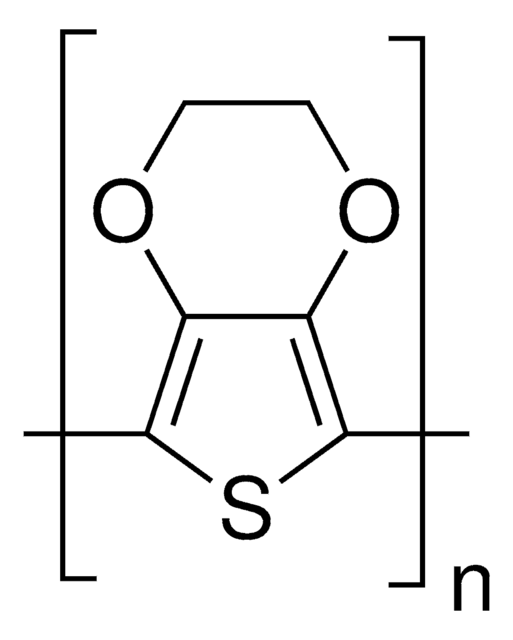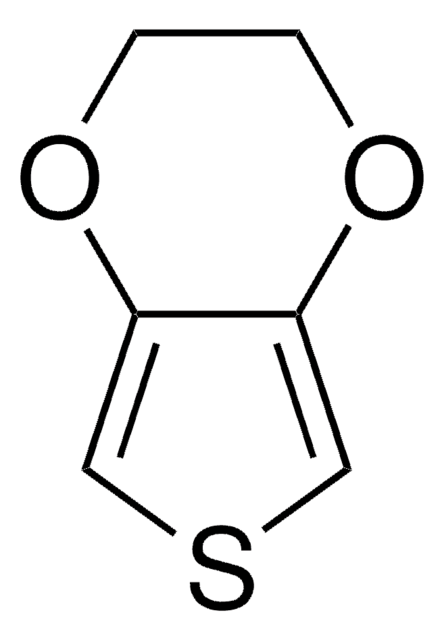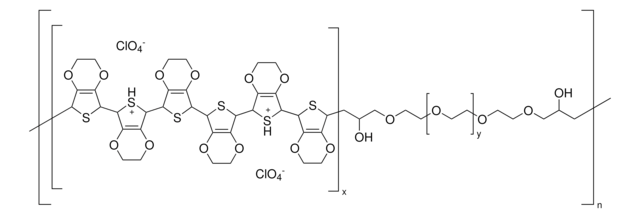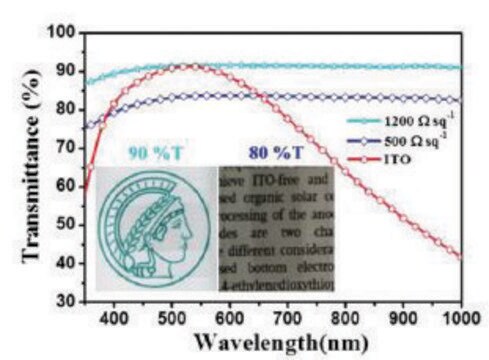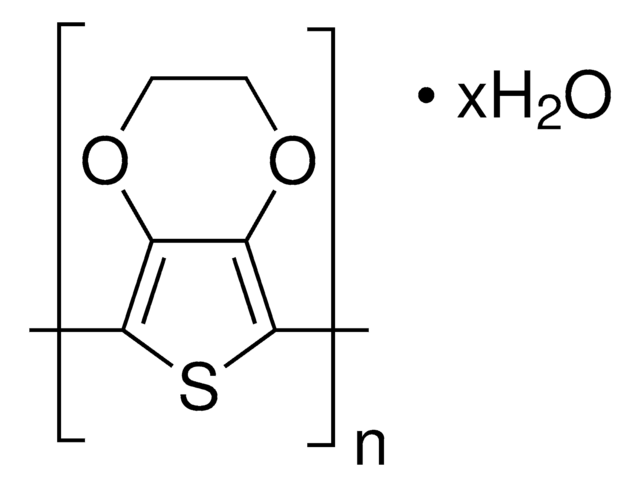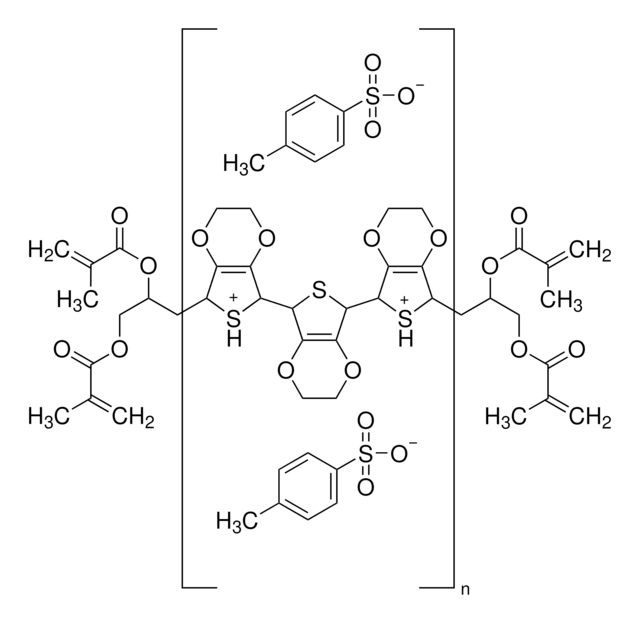Kluczowe dokumenty
560596
PEDOT:PSS
low-conductivity grade, 2.7 wt. % aqueous dispersion
Synonim(y):
PEDOT:PSS, Poly(2,3-dihydrothieno-1,4-dioxin)-poly(styrenesulfonate)
About This Item
Polecane produkty
Nazwa produktu
Poly(3,4-ethylenedioxythiophene)-poly(styrenesulfonate), 2.7 wt % dispersion in H2O
skład
PEDOT content, ~0.14%
PSS content, ~2.6%
Poziom jakości
stężenie
2.7 wt % dispersion in H2O
zanieczyszczenia
<300 ppm Na
wielkość cząstki
<200 nm, coeff var >95%
pH
1.2-1.8
przewodność
~1E-5 S/cm
lepkość
<20 cP(20 °C)
temp. przechowywania
2-8°C
Szukasz podobnych produktów? Odwiedź Przewodnik dotyczący porównywania produktów
Powiązane kategorie
Opis ogólny
Zastosowanie
Cechy i korzyści
Opakowanie
Hasło ostrzegawcze
Danger
Zwroty wskazujące rodzaj zagrożenia
Zwroty wskazujące środki ostrożności
Klasyfikacja zagrożeń
Eye Dam. 1 - Skin Corr. 1
Kod klasy składowania
8B - Non-combustible corrosive hazardous materials
Klasa zagrożenia wodnego (WGK)
WGK 2
Temperatura zapłonu (°F)
Not applicable
Temperatura zapłonu (°C)
Not applicable
Środki ochrony indywidualnej
Faceshields, Gloves, Goggles, type ABEK (EN14387) respirator filter
Wybierz jedną z najnowszych wersji:
Masz już ten produkt?
Dokumenty związane z niedawno zakupionymi produktami zostały zamieszczone w Bibliotece dokumentów.
Klienci oglądali również te produkty
Produkty
Samouczek Sigma-Aldrich na temat nanopatterningu litograficznego objaśnia wzorowanie warstw przewodników, półprzewodników i dielektryków na powierzchniach.
Tutorial Lithography Nanopatterning at Sigma-Aldrich. Lithography, based on traditional ink-printing techniques, is a process for patterning various layers, such as conductors, semiconductors, or dielectrics, on a surface.
New conducting and semiconducting polymers for plastic electronics
Find advantages of inorganic interface layer inks for organic electronic & other applications.
Global Trade Item Number
| SKU | GTIN |
|---|---|
| 560596-25G | 4061832583433 |
| 560596-100G | 4061832583426 |
Nasz zespół naukowców ma doświadczenie we wszystkich obszarach badań, w tym w naukach przyrodniczych, materiałoznawstwie, syntezie chemicznej, chromatografii, analityce i wielu innych dziedzinach.
Skontaktuj się z zespołem ds. pomocy technicznej
